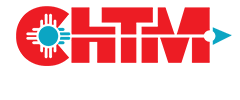Recent News
CHTM Joins NSF's NQVL Pilot Projects
August 9, 2024
OSE PHD, Dr. Xuefeng Li - Wins The Outstanding Interdisciplinary Graduate Programs Award
May 10, 2024
Dr. Ali Rastegari - 2024 OSE Best Dissertation Award Winner
May 10, 2024
2024 OSE Spring and Summer Graduates
May 10, 2024
News Archives
New program provides high school students with immersive experience in high-tech research
August 1, 2022
Incoming high school seniors are being given an opportunity to gain hands-on experience in scientific methods thanks to a new program at The University of New Mexico funded by the National Science Foundation (NSF). Led by Associate Professor, Terefe Habteyes in the Department of Chemistry and Chemical Biology and the Center for High Technology Materials (CHTM), the High School Incoming Senior Research (HSISR) program is exposing students to future career paths in science.
For six weeks over the summer, five high school students were given the opportunity to do something they don’t generally get to do in their high school classes: conduct experiments in a high-tech research laboratory. The high school students came from Atrisco Heritage Academy High School, La Cueva High School, Hope Christian School, and the Albuquerque School of Excellence. Together, they worked with Habteyes and a graduate student to develop their own projects and gain firsthand knowledge of how research is conducted in a state-of-the-art facility.
The experience was made possible by an NSF CAREER award received by the Habteyes research laboratory with the goal of exposing high school-aged students to the field prior to the transition of their senior year. It is at this critical juncture that students begin thinking about their college opportunities, and it is programs like the HSISR that will help inform their decision-making as they begin to consider their future options.
When asked why he chose to participate in the HSISR this summer, Sammy Hadgu, who is an incoming senior at La Cueva High School, said, “I was interested in learning more about nanoparticles, but I also wanted to experience a research internship as well. I know that a summer internship is important to colleges when applying for them, so I took it into consideration and knew it would be something interesting I’ve done to put on my resumé.”
To provide as robust an experience as possible, students were assigned various projects to focus on developing throughout the six weeks. Since none of them had been exposed to a laboratory of this kind, they were not only taught how to use the equipment but were also given the opportunity to use the tools available to them in order to develop their research. Throughout the course of this program, all students were given the opportunity to use high-tech equipment to investigate
Equipped with this new knowledge, students were able to put their training into practice by investigating a phenomenon called “plasmon enhanced photocatalysis”. A nanoparticle has a number of unusual optical properties that can be significantly different from the bulk material it came from, depending on a number of factors. In this application, students used metal nanoparticles to concentrate light energy within one billionth of a meter (or nanometer).
By preparing solutions at different concentrations, students were able to study the electronic absorption properties of organic materials by measuring UV-visible absorption spectra. This process introduced them to Beer’s Law, which states that the absorption capacity of a dissolved substance is directly proportional to a solution’s concentration.
The experience of being on a University campus was a welcome introduction for the students as well. Benicio Martinez of Atrisco Heritage Academy High School found this aspect of the program to be an added bonus to the experience he received, saying, “I enjoyed the opportunity to work in the labs and do research in a scientific field. I also enjoyed the feeling of being on university grounds going out to eat lunch and explore around UNM.”
In addition to Habteyes’ guidance, the high school students were also able to work with three undergraduate students and one graduate student mentor to help them develop their projects. The purpose of this was twofold: 1.) to provide an expanded learning opportunity for the high school students, and 2.) to ensure that the projects developed this summer continue to evolve, as the undergraduate and graduate students will continue to develop them throughout the academic year.
At the completion of the program, students shared their results at a final presentation ceremony on July 22. Speaking about his experience this summer, Jonathan Henok, who is an incoming senior at La Cueva High School, said, “This internship allowed me to understand scientific research in-depth at a college-level program. I enjoyed working with people who cooperated and were friendly, and other social components made the experience amazing.”
Jonathan Tessema, from the Albuquerque School of Excellence, found that the HSISR gave him a lot of pride in being able to accomplish something he had never done before. Especially the experience of, “giving a presentation to a group of people and fully understanding the topic.”
Kidus Tekle of Hope Christian Schools found the HSISR to be an instant community of fellow researchers that he could connect with, saying, “I … enjoyed that I got to share the experience with four other students just like me, which made it even more fun.”
Habteyes is proud of the program’s inaugural summer and looks forward to being able to provide this experience to more incoming seniors in the future. He said, “I was very happy to see that the students have learned so much in six weeks working for six hours a day… Overall, it has been a very valuable experience. I strongly feel that there should be a national competitive program to engage brilliant young students in science at their early age.”
This story was originally published on UNM News. To see the article, click here.


